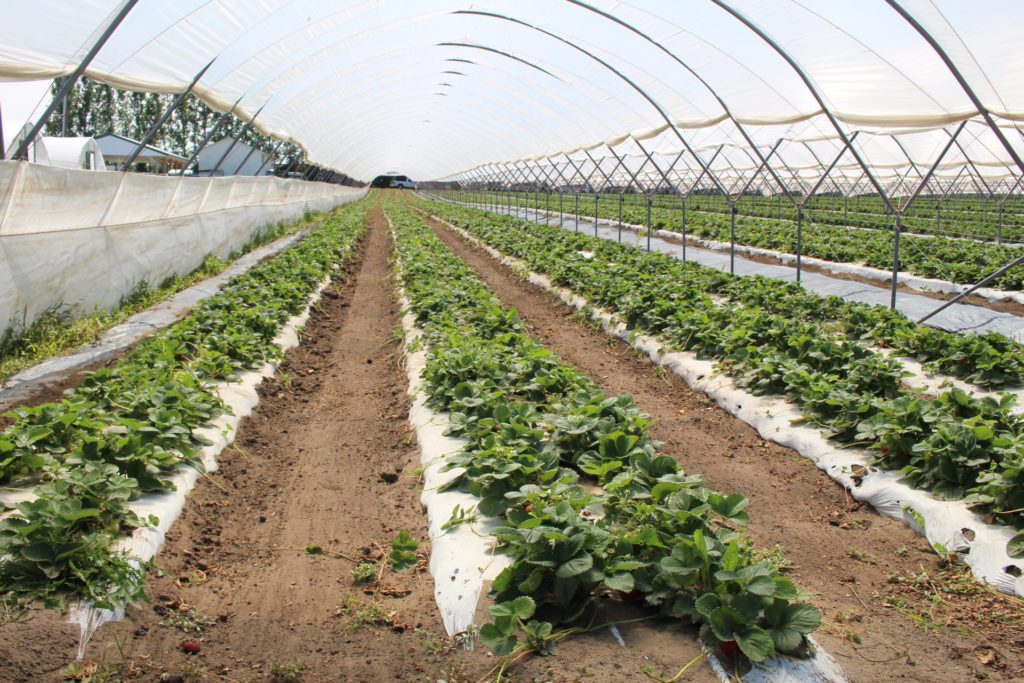Oct 26, 2017A look at strawberry production under colorized films
Researchers studied the influence of colored plastic films (red, yellow, green, blue, and white) on fruit quality, antioxidant capacity, and gene transcripts in greenhouse-grown strawberries. Fruits grown under white plastic film were used as the controls.
Results indicated that there was no difference in single fruit weight due to colored plastic films in the present study. The colored plastic films had significant effects on sugar and organic acid content. The content of total sugar (SUG) was increased by 10.39% and total organic acid (ACID) was decreased by 16.58% in fruit grown under blue plastic film compared with the controls.
Fruit grown under blue plastic film had significantly higher SUG content and lower ACID content than fruit subjected to yellow and green plastic films and had the highest SUG/ACID ratio of 11.46. Colored plastic films had significant effects on bioactive compound (anthocyanin, flavonoid, phenolic) content and antioxidant capacity.
The highest level of bioactive compound content was detected under red plastic film. The content of total phenolics, total flavonoids, and total anthocyanin (TAC) in fruits grown under red plastic film was respectively 23.10%, 25.37%, and 74.11% higher than that of the fruits grown under the control. The antioxidant capacities were highest in fruits grown under red plastic film.
Fruits grown under red and yellow films had higher sucrose phosphate synthase (SPS) and sucrose synthase (SS) activity than those fruit covered with green, blue, and white plastic films at whole fruit development stages. Acid invertase (AI) activity was high in fruit grown under green plastic film and declined during development. Blue plastic film had mainly increased the FaSPS and FaAI transcript at the green stage, and decreased the expression of FaSS.
It is proposed that colored plastic films can regulate the expression of genes involved in the flavonoid biosynthesis pathway, especially FaPAL, FaF3H, FaFGT, and FaMYB10, at half-red and red stages.
–Lixiang Miao, Zhejiang Academy of Agricultural Sciences
Access the full study at HortScience.















